L.A.'s Famous Four-Level Freeway Interchange, 'The Stack,' Turns 58

Fifty-eight years ago today, the Four Level interchange first opened to traffic. This iconic concrete ribbon that binds the 101 and 110 freeways is an almost inescapable feature of many Southern Californians' commute. Admired by some and feared by others, the Four Level was—like many other highway innovations in Los Angeles—the first of its kind and destined to be copied elsewhere.
The Four Level, also known as the Stack, gets its name from its multi-tiered structure that separates traffic heading in each direction into dedicated lanes. On the bottom level are curved ramps for those changing from the 110 freeway to the 101. One level above is the main trunk of the 110 freeway, named the Arroyo Seco Parkway north of the interchange and the Harbor Freeway south of it. On the third level are the arcing flyover ramps carrying traffic from the 101 freeway to the 110. Finally, on the fourth and top level is the main trunk of the 101 freeway, named the Hollywood Freeway to the west and the Santa Ana Freeway to the east.
This design, now the basis of freeway interchanges around the world, was a marked improvement over the previous model. Older cloverleaf interchanges were less expensive and kept a lower profile, but they also tended to slow traffic and were more dangerous. They required motorists both entering and exiting a freeway to merge into one lane. (The 405 freeway's interchange with Wilshire Boulevard in Westwood is an example.) Stack interchanges, on the other hand, kept the eight directions of traffic separate until the final merge.
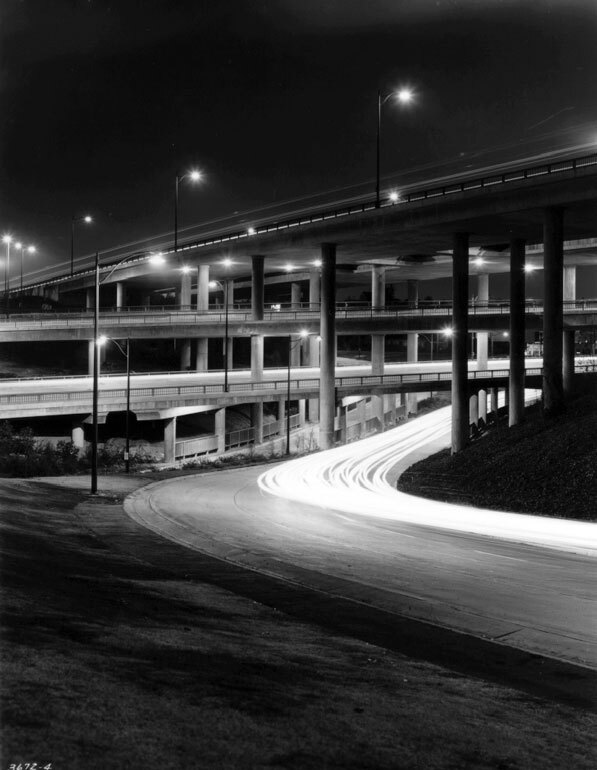
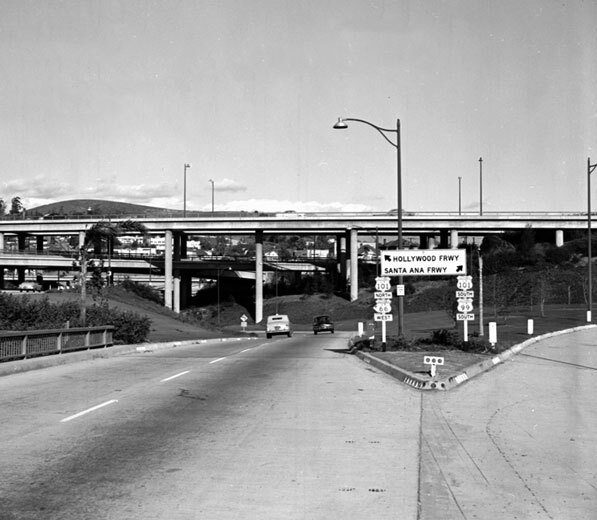
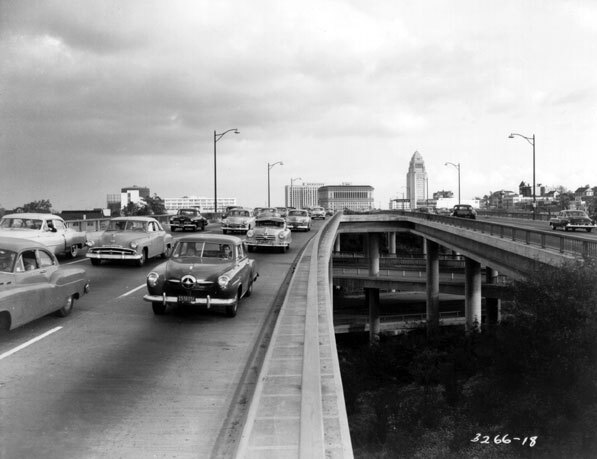
Still, the Four Level manages to inspire dread in some motorists. Merging is not always easy; transitioning from the southbound Hollywood (101) Freeway to the southbound Harbor (110) Freeway requires a tricky three-lane maneuver to avoid the exit-only lanes bound for downtown streets. The interchange is also confluence of freeway names and numbers that can be confusing even to locals. Frustrated by missing information on Caltrans' lane guidance signs, artist Richard Ankrom once installed his own signage near the interchange as an act of "Guerilla Public Service."
Plans for the interchange were first unveiled on April 22, 1944. Construction cost $5.5 million and required demolition of the neighborhood adjacent to Bunker Hill. Work finished by 1949, but the interchange then sat unused for years; construction crews were still building the connecting Hollywood, Harbor, and Santa Ana freeways. The Four Level opened in successive stages, but it was not until September 22, 1953 that motorists could drive on all 22 of its lanes and over all seven of its bridges.
Following the Northridge earthquake, the Four Level was retrofitted in 1997. In 2006, Caltrans renamed it the Bill Keene Memorial Interchange after the late KNX-AM and KNXT-TV traffic and weather announcer.
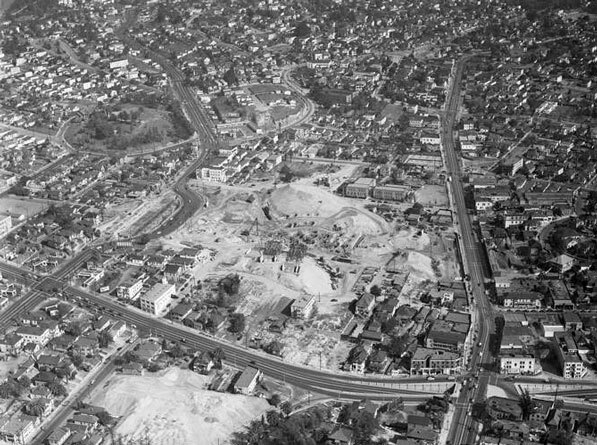
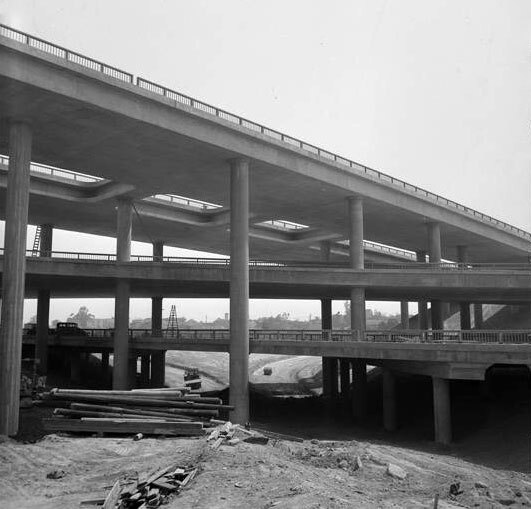

Many have admired the Four Level for its aesthetic qualities. In L.A. Freeway: An Appreciative Essay (1981), David Brodsly praised the "particularly elegant" interchange for its "simple lines." And despite some Southern Californians' fondness for the 10-405 and 105-110 interchanges, the Four Level holds the distinction of being the only interchange in the region to be certified as a civil engineering landmark by the Society of Civil Engineers.
Contemporary fiction has also recognized the Four Level's landmark status, often depicting it as an unconscious manifestation of the conscious terror the interchange inspires in some motorists. In Thomas Pynchon's novel The Crying of Lot 49, one character has a "boozy, black-and-white dream of jumping off The Stack into rush-hour traffic."
Maria in Joan Didion's Play It As It Lays likewise dreams of the iconic interchange. She "lay at night in the still of Beverly Hills and saw the great signs soar overhead at seventy miles an hour, Normandie ¼ Vermont ¾ Harbor Fwy 1. Again and again she returned to an intricate stretch just south of the interchange where successful passage form the Hollywood onto the Harbor required a diagonal move across four lanes of traffic. On the afternoon she finally did it without once braking or losing the beat on the radio she was exhilarated, and that night slept dreamlessly."
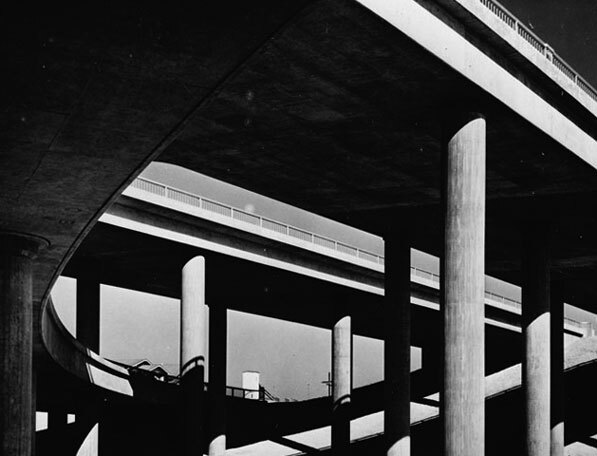
The images in this post from the UCLA Library are used under a Creative Commons license.
Hat tip to Twitter user LAhistory, who shared the link to Philip J. Ethington's "Ghost Neighborhoods."